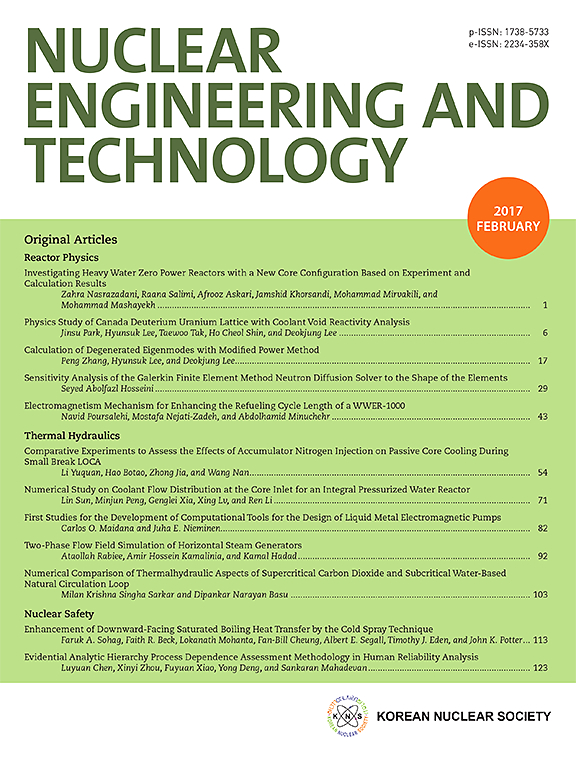Scenario analysis of radon attenuation efficacy of earthen cover for uranium mill tailings impoundment driven by dry and wet cycles
IF 2.6
3区 工程技术
Q1 NUCLEAR SCIENCE & TECHNOLOGY
引用次数: 0
Abstract
The stability and reliability of earthen cover (EC) are crucial for radon treatment of uranium mill tailings (UMTs), and radon attenuation efficacy (RAE) typically serves as the key parameter for performance evolution analysis of the EC. The EC is generally exposed to a periodic meteorological environment with the characteristic of significant dry-wet cycles, therefore the evolution of RAE exhibits apparent uncertainty and unpredictability. In this study, the method of scenario analysis, on the basis of previous research findings and logical reasoning, was utilized to assess the RAE of EC evolution of a typical UMTs impoundment in China. Specifically, a scenario-based degradation model for RAE was developed by defining three core dimensions: dry and wet meteorological environments, intrinsic characteristics of EC, management practices of UMTs impoundment. The critical factors influencing the RAE were identified, and the scenario model was further validated via indoor accelerated degradation experiments. This study can provide a scientific foundation for the optimal design of EC for UMTs impoundment, as well as ensure the UMTs impoundment within effective and long-term radon attenuation performance.
干、湿循环驱动下铀矿尾矿库土盖氡衰减效果情景分析
土罩的稳定性和可靠性对铀尾矿的氡处理至关重要,而氡衰减效率(RAE)是土罩性能演变分析的关键参数。欧共体通常处于具有显著干湿循环特征的周期性气象环境中,因此RAE的演变表现出明显的不确定性和不可预测性。本文在借鉴前人研究成果的基础上,运用情景分析的方法,运用逻辑推理的方法,对中国典型UMTs水库EC演化的RAE进行了评估。具体而言,通过定义干湿气象环境、EC内在特征、UMTs蓄水管理实践三个核心维度,建立了基于场景的RAE退化模型。确定了影响RAE的关键因素,并通过室内加速降解实验对情景模型进行了进一步验证。该研究可为UMTs蓄水池EC的优化设计提供科学依据,确保UMTs蓄水池具有长期有效的氡衰减性能。
本文章由计算机程序翻译,如有差异,请以英文原文为准。
求助全文
约1分钟内获得全文
求助全文
来源期刊

Nuclear Engineering and Technology
工程技术-核科学技术
CiteScore
4.80
自引率
7.40%
发文量
431
审稿时长
3.5 months
期刊介绍:
Nuclear Engineering and Technology (NET), an international journal of the Korean Nuclear Society (KNS), publishes peer-reviewed papers on original research, ideas and developments in all areas of the field of nuclear science and technology. NET bimonthly publishes original articles, reviews, and technical notes. The journal is listed in the Science Citation Index Expanded (SCIE) of Thomson Reuters.
NET covers all fields for peaceful utilization of nuclear energy and radiation as follows:
1) Reactor Physics
2) Thermal Hydraulics
3) Nuclear Safety
4) Nuclear I&C
5) Nuclear Physics, Fusion, and Laser Technology
6) Nuclear Fuel Cycle and Radioactive Waste Management
7) Nuclear Fuel and Reactor Materials
8) Radiation Application
9) Radiation Protection
10) Nuclear Structural Analysis and Plant Management & Maintenance
11) Nuclear Policy, Economics, and Human Resource Development
 求助内容:
求助内容: 应助结果提醒方式:
应助结果提醒方式:


